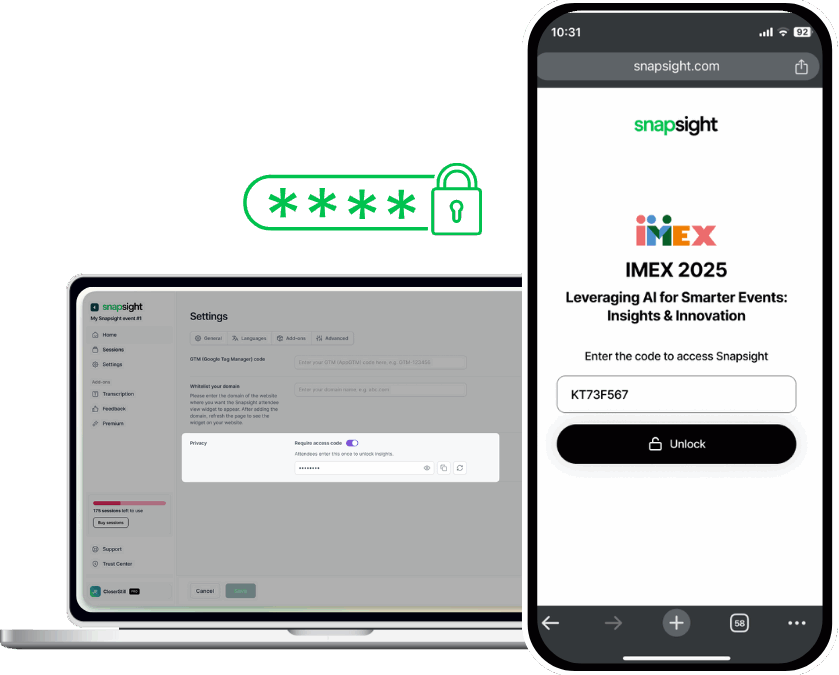Most event organizers breathe a sigh of relief when the last attendee walks out the door. The event is done, the chaos subsides, and it’s time to move on. Right? Not quite.
What happens after an event is just as important as what happens during it. The real value of an event doesn’t end when the stage lights dim—it’s in how you extend its impact, repurpose insights, and keep the conversation going. That’s where post-event content comes in. Done right, it turns fleeting moments into long-term influence.
1. Turn Insights into Long-Term Value
Every event is a goldmine of knowledge—expert panels, audience reactions, Q&A sessions brimming with unfiltered opinions. But if those insights stay locked in a room, their value disappears the moment the event ends.
Smart event teams find ways to capture and package these insights, turning them into reports, articles, and even new content series. For example, post-event reports aren’t just for internal reflection—they can be powerful assets for exhibitors and sponsors, showing engagement metrics, attendee sentiment, and key discussion trends that help justify their investment.
2. Make Your Content Work Overtime
A great session shouldn’t die after 45 minutes on stage. Post-event content is about extending its shelf life. That keynote everyone loved? Turn it into an article. That panel discussion with incredible takeaways? Break it into short video clips. The in-depth industry insights shared? Perfect for a whitepaper.
More organizers are using AI to fast-track this process. Instead of manually sifting through hours of footage and transcripts, they’re leveraging tools that extract key takeaways and surface emerging themes in real-time. Platforms that provide real-time summarization and structured takeaways make this process more efficient, ensuring that key insights don’t get buried under hours of raw content.
3. Give Attendees a Way to Revisit and Share
Attendees experience information overload. They might remember a great speaker, but specifics? Those fade fast. That’s why giving them a way to revisit content is key.
Summarized takeaways, visual idea clouds, or even interactive session recaps make it easier for attendees to recall and share what resonated with them. Tools like Snapsight make this effortless by capturing real-time event insights and generating structured takeaways that attendees can revisit and share. Instead of digging through lengthy recordings, they get instant access to the most valuable moments.
4. Keep the Conversation Going
An event isn’t just a one-time gathering—it’s a catalyst for ongoing discussions. The best post-event content isn’t just a recap; it’s a launchpad for deeper conversations.
Sharing key themes from sessions can spark industry-wide debates. Q&A responses can evolve into dedicated blog posts. A particularly engaging discussion can inspire a follow-up webinar. Instead of letting momentum die, strategic post-event content keeps the dialogue alive long after the last session ends.
5. Strengthen Exhibitor and Sponsor ROI
Exhibitors and sponsors aren’t just there for brand visibility—they want tangible insights on their engagement. What were attendees most interested in? Which topics had the most traction? Where were potential business opportunities spotted?
A strong post-event strategy includes detailed reports that go beyond vanity metrics. Instead of just tracking booth visits, it’s about understanding audience sentiment, engagement patterns, and emerging trends. AI-powered insights can make this process more dynamic, helping sponsors and exhibitors get clear, data-driven takeaways that demonstrate their impact.
6. Capture Trends and Industry Shifts in Real Time
Beyond individual sessions, every event reflects bigger industry conversations. The themes that dominate, the sentiments that surface, the unexpected debates that spark interest—these are all signals of where the industry is heading.
The smartest organizers aren’t just running events; they’re actively mapping out these shifts. By analyzing post-event content—whether through structured takeaways, sentiment analysis, or attendee discussions—they’re staying ahead of the curve, spotting emerging trends before they fully take shape.
7. Expand Your Post-Event Content Arsenal
While event recaps and reports are useful, there are plenty of other content formats to explore:
- Short-form social content: Turn highlights into engaging posts, video snippets, or interactive polls.
- Long-form thought leadership: Use event insights to fuel in-depth blogs, industry reports, or whitepapers.
- On-demand video & podcasts: Repurpose key sessions into binge-worthy, shareable content.
- Follow-up webinars or Q&As: Keep the conversation alive by addressing audience questions that surfaced during the event.
- Infographics & visual storytelling: Summarize key takeaways in an easily digestible format.
- Email newsletters: Deliver the best moments straight to attendees’ inboxes.
- User-generated content: Encourage attendees to share their insights and takeaways.
Events aren’t just about the days they run—they’re about the lasting impact they create. Whether it’s through surfacing key insights, creating engaging post-event assets, or helping exhibitors extract real value, what happens after an event determines its true success.
So while the event itself may end, the smartest organizers know that’s when the real work—and the biggest opportunities—begin.
The event’s over. The buzz doesn’t have to be.
Snapsight makes sure your best moments don’t get lost in the post-event silence:
- Instant AI takeaways—because no one rewatches full recordings
- Multilingual recaps, so insights travel further
- Quick-share content that actually gets shared
- Smart insights for sponsors, so they don’t ask, “Was it worth it?”

